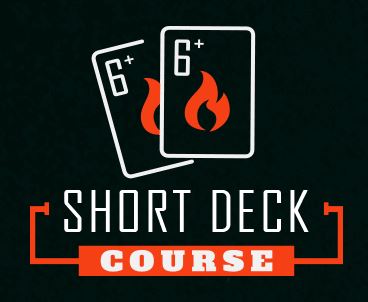Rules of the Game
Short Deck Hold’em is simply No Limit Hold’em played with a thirty-six card deck where the twos, threes, fours, and fives have been eliminated. This effectively ends the all too often stretches of always looking at complete duds like nine-deuce off suit and the like. Jack-six off suit is the Seven-deuce off suit of Short Deck and has few exciting possibilities; however, the odds are greater that you will get dealt hands with potential. Equities run much closer in the game and an ante only structure that frequently accompanies the game provides the impetus for a ton of action.
Another very unique aspect of this game is that the aces are also considered low. In other words, A6789 is the new wheel. Be very mindful of this aspect at all times as not to misread your hand and/or potentially not fully consider a powerful holding that your opponent may have. When you are new to the game it is helpful to constantly remind yourself that aces are fives.
The use of a short-deck also changes some of the traditional hand rankings because flushes are now mathematically more difficult to make than full houses and trips are made less frequently than straights. In all variations currently played flushes beat full houses but the rules vary on whether or not trips beat straights.
In Asia and the high-roller tournaments the rules stipulate that a straight still beats three of a kind and is typically played as an ante-only structure. This version is often referred to as either Short Deck Hold’em or Triton Poker and is action packed because connecting cards are very valuable and the structure often encourages large multi-way pots.
In the ante only structure everyone antes, however the button is forced to make a double ante. The pre-flop action starts to the left of the button and that person has the option to fold, put in one more ante, or raise to any amount they wish. Each person in turn then has the option to fold, match the current bet, or raise or re-raise.
Short Deck is also sometimes played with the conventional blinds and most often in these games trips beat straights. This structure and rules is most often referred to as Six Plus Hold’em and is the version now spread by some online sites. However, recently PokerStars has introduced an online version where straights do beat trips and are marketing it as Six Plus Hold’em so don’t get confused. The first rule of poker is to know the rules!
Basic Strategy
Short Deck Hold’em utilizes a very unique structure that helps facilitate action while also allowing for a multitude of different yet successful strategies for the opening round of betting.
In the ante only structure everyone except the button antes once while the button is forced to make a double ante. The pre-flop action starts to the left of the button and that person has the option to fold, put in one more ante, or raise to any amount they wish. Each person in turn then has the option to fold, match the current bet, or raise or re-raise. The first person to limp is getting a tremendous 7 to 1 on their money while the odds and position get better for each player in succession.
With the truncated deck you are more likely to dealt be good hands; you are slightly more than twice as likely to be dealt aces or any other particular hand. Sets are flopped more often. In Hold’em your odds of flopping a set are approximately 12% whereas in Short Deck it is around 18%.
Flopped straights are much more common, any hand capable is typically more than three times as likely in Short Deck. For example, JT has a 1.2% probability in Hold’em but has 4.2% chance in Short Deck. In Hold’em an eight out draw has around a 31.4% probability coming in, however in Short Deck it is 45.6%.
Flushes are harder to hit because four flush cards have been removed from the deck. Flush draws now only have five outs instead of nine thus they are harder to hit and are ranked higher than full houses.
Position is much more desired in Short Deck due to the fact that equities run much closer and turns and rivers are scarier as the deuces and other blanks are taken out of the deck. In essence most flops are “wet” in that future board cards will often present possible strong holdings and if not will usually improve your opponent one way or another. In Short Deck by the river the board will either be paired or there will be at least one straight possible.
Further Learning
Check out Upswing Poker’s Short Deck Mastery course from Kane Kalas.

